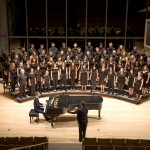ABOUT THE SYMPOSIUM
“Resisting Anti-Semitism: Past and Present, Local and Global” is a symposium to be held at Swarthmore College’s LPAC Cinema on September 16th, 2018, co-hosted by Dr. Sa’ed Atshan of Peace and Conflict Studies and Rabbi Michael Ramberg of the Interfaith Center and the Office of Religious and Spiritual Life. The subject of anti-Semitism has sparked heated debate in colleges and universities and we hope to model productive dialogue and engagement on this important issue.
Modern anti-Semitism, invented in 19th century Europe drawing on millenia of anti-Judaism, has caused incalculable harm to Jews. The harm it has caused is not limited to Jews, though. Modern anti-Semitism has also indirectly harmed other vulnerable groups, by misdirecting these groups’ anger towards Jews when in fact others bear responsibility for these groups’ oppression. After the Holocaust many people and institutions committed to oppose anti-Semitism and the cynical misuse of it, but in recent years anti-Semitism has experienced a public revival and committed anti-Semites and opportunists willing to exploit anti-Semitism have come to hold positions of power around the world. While it has proven frustratingly resilient, wherever it has arisen, anti-Semitism has encountered resistance and its opponents have found effective means of opposing it.
“Resisting Anti-Semitism: Past and Present, Local and Global” aims to seriously engage with the topic of anti-Semitism – the forms it has taken in the past and the forms it takes now, the ways it has been successfully opposed in the past and the ways it is being successfully opposed now. We will bring together academics, rabbis, activists, and artists, among others, with expertise in three regions – North America, Europe, and the Middle East and North Africa – and engage them in conversation with each other and the Swarthmore community. Enriched by diverse perspectives of our distinguished panelists, symposium participants will gain a deeper understanding of the form of prejudice and violence, an enhanced commitment to opposing it, and a strengthened ability to do so.
Sponsored by Swarthmore College Peace and Conflict Studies Program; Andrew Mellon Foundation; Swarthmore College Lang Center for Civic and Social Responsibility; and Swarthmore College Office for Diversity, Inclusion, and Community Development.
SCHEDULE
A summary of the schedule is posted first, followed by a more detailed schedule.
Schedule Summary:
9:00 – 9:30: Registration and Opening Remarks
9:30 – 11:00: United States Panel
11:00 – 11:30: Break
11:30 – 1:00: Europe Panel
1:00 – 2:30: Break
2:30 – 4:00: Middle East/North Africa Panel
4:00 – 4:30: Break
4:30 – 5:45: Keynote
5:45 – 6:00: Closing Remarks
Detailed Schedule:
9:00 – 9:30: Registration and Opening Remarks by Rabbi Michael Ramberg, Jewish Advisor, Swarthmore College
9:30 – 11:00: United States Panel Moderated by Dr. Gwynn Kessler, Associate Professor of Religion, Swarthmore College
United States Panelists:
M. Dove Kent, Executive Director, Jews for Racial & Economic Justice
Dr. Laura Levitt, Professor of Religion, Jewish Studies and Gender, Temple University
Eric Ward, Executive Director, Western States Center
11:00 – 11:30: Break
11:30 – 1:00: Europe Panel Moderated by Dr. Robert (Bob) Weinberg, Isaac H. Clothier Professor of History and International Relations, Swarthmore College
Europe Panelists:
Dr. Jonathan Judaken, Spence L. Wilson Chair in Humanities, Professor of History, Rhodes College
Rabbi Rebecca Lillian, Project Manager, Open Skåne Social Cohesion Initiative; Teacher, Lund University (Malmö, Sweden)
Dr. Laurie Marhoefer, Assistant Professor of History, University of Washington
1:00 – 2:30: Break
2:30 – 4:00: Middle East/North Africa Panel Moderated by Rabbi Helen Plotkin, Visiting Assistant Professor of Religion and Director, Beit Midrash, Swarthmore College
Middle East/North Africa Panelists:
Dr. André Aciman, Distinguished Professor, Graduate Center, City University of New York, and Author of Call Me by Your Name
Dr. Orit Bashkin, Professor of Modern Middle Eastern History, University of Chicago
Dr. Israel Gershoni, Professor of Middle Eastern and African History, Tel Aviv University
4:00 – 4:30: Break
4:30 – 5:45: Keynote by Rabbi Sharon Kleinbaum, Senior Rabbi, Congregation Beit Simchat Torah
5:45 – 6:00: Closing Remarks by Dr. Sa’ed Atshan, Assistant Professor of Peace and Conflict Studies, Swarthmore College
HOW TO ARRIVE
The symposium will be held at Swarthmore College’s Lang Performing Arts Center Cinema on September 16th, 2018 and will be open to the public.
Swarthmore College is located at 500 College Avenue, Swarthmore, PA, 19081. Free visitor parking is available in the Benjamin West Parking Lot on Chester Road (#5 on the Swarthmore Campus Map). The symposium will be held in Lang Performing Arts Center Cinema (#34 on the campus map).
From the Benjamin West Parking Lot, walk towards campus until you reach the large, tree-lined path (Magill Walk). Continue up the path until you reach the end of the path, then turn left and turn right at the end of the large building. The symposium location will be straight ahead.




